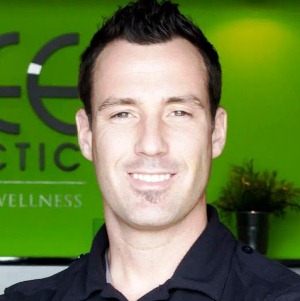So the way the system works is each region of the practice you can think of as a region of the spine. You have scheduling, you have billing, and you have documentation. Scheduling is made up of different steps or steps in the process.
The process is like the backbone, each step being a vertebrae. In the scheduling process we know we need to make an appointment, we need to know who has future appointments, we know there needs to be care plans. All these are steps in the process.
Anytime there is a misalignment, or a step in the process that doesn’t happen properly. It’s basically subluxation and it blocks the data getting from the scheduler, let’s say to the travel card or where the documentation happens, or over to billing, where the claims are actually billed. So any subluxation or backup in the data is measured in our system as a task or a ticket. These tasks simplify your practice management.
If we have an untrained user, that doesn’t first of all know how to follow the steps in the process or second of all know how to manage the work that the system brings to the surface, what we have is subluxation. Again not just in that practice, in the cash flow, patient flow, and the compliance of that practice, but it’s a subluxation of the entire network and we really can’t afford that as a profession. Again, we need to have every single user optimally trained on the system. That’s how vitally important it is to the success and health of your practice and the overall network.
So our training system has seven key components:
Number one, we have one hundred online classes with quizzes.
Number two, you can actually track the progression of those classes per user. You can see which classes they’ve taken and which they’ve passed and which they need to retake.
Number three, we have rating systems for all training materials. Whatever classes you take or quizzes you take or training materials that are out there, you get to rate them. And that has actually helped us drastically improve over time the materials that are there for you today, and they have been all tested. Usually by now they all have good ratings but if we introduce something new, please take the opportunity to rate the materials that you have and give feedback.
Number four, there is a search-able help and frequently asked question section. So you can always go in there and search, kind of like a Google search for stuff specific to Billing Precision.
Number five, there’s daily live help sessions so you can actually log on, click on the scheduler and you can see each day there’s a live help session, where there’s a live person.
You can login and ask a question, and you will get a real answer from a real person.
Number six, the help ticketing system. Help ticketing is awesome because when you create a ticket it’s fully transparent and track-able. When you create a ticket it says who you are, when you created it, therefore you can see who replied to you, how long it took them to reply, what their answer was, and then it is track-able. It can be bounced back and forth between each person in the conversation, or over to another person for more feedback. Then that way you are sure that that ticket, that question gets answered, not unlike a claim ticket.
Number seven would be the discussion forums, which is just a simple place within the system where you can go voice an opinion, ask a question and get feedback from other people on the network.
So when it comes to training, remember when you are using Billing Precision it is not just about making your practice as efficient as possible. It’s about making the entire system as efficient as possible so that you have better patient flow, better cash flow, and better compliance, and ultimately you are giving every opportunity that you have to pass along the principles of chiropractic, and the best opportunity to do that. So it’s not just about a better scheduler, better notes, or better compliance.
It’s about giving every person the best opportunity to live a healthier and more fulfilling life based on chiropractic principles.


